Catherine Hyland is an artist based in London. She graduated from Chelsea College of Art and Design with a First class BA (Hons) Degree in Fine Art and completed her Masters at the Royal College of Art.
Her fascination with landscape is the inspiration behind her other-worldly, large-format, images depicting humanity’s attempts – some more effective than others – to tame its environment. Hyland’s view of the world is particularly apparent in Belvedere, Italian for “beautiful view”, which observes the way people interact with and experience the tourist sites and places of leisure, from Beidaihe in China to Durdle Door in Dorset. “People constantly try to escape our mediated world because it’s very difficult to find something truly authentic,”says the London-based photographer. “So much of our life is based around reproductions and mass-manufactured illusion that we start to get the overwhelming feeling we’re all occupying the same space. So we seek out new experiences as a remedy for that feeling,”
Her other ongoing project, ‘Universal Experience’, instead suggests the insignificance of humanity set against the vastness of the Chinese and Mongolian landscapes. Her work combines ideas of the sublime, the tourist gaze and collective memory with theories on survey photography and the ways in which we try to control the land around us, placing the natural and the artificial side by side.

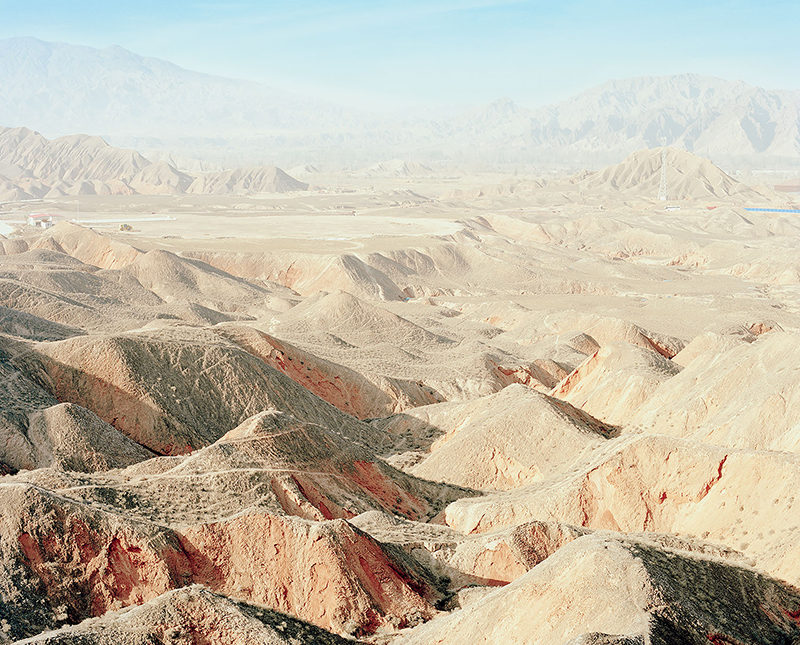
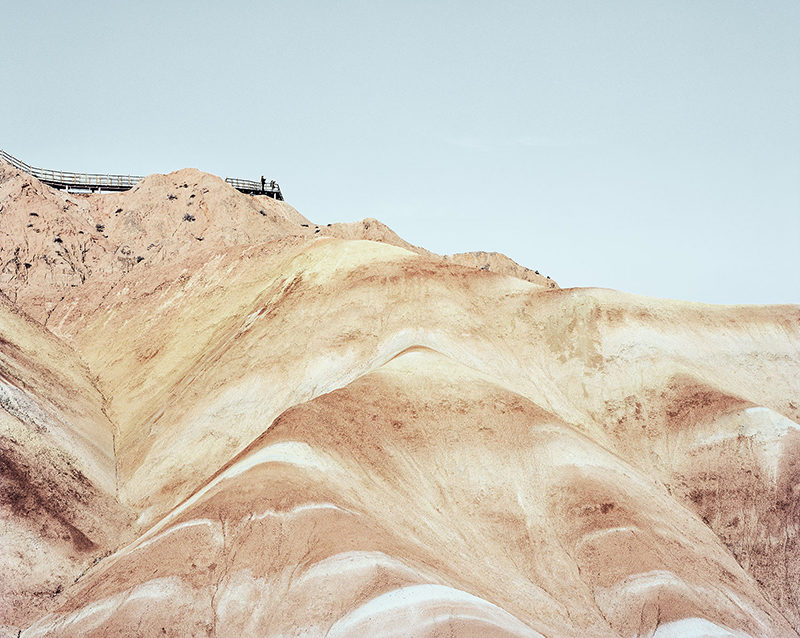
Universal Experience
Picturesque, Sublime and Dangerous: Landscapes with Chinese Characteristics
It’s the immensity of Catherine Hyland’s landscapes that first grab you. Look at her picture of the mineral-stained hills of Zhangye Danxia Landform Geological Park in China’s Gansu Province and you feel human life slipping away. These are expansive images where the horizon disappears into a haze of barren mountainsides. There is no life here, no vegetation to soften the impression of aridity and heat. It’s alien, it’s barren and it’s dead.
It’s a wild landscape but at the same time it’s a landscape that’s been tamed for human consumption. There on the right of the frame is a fence, a viewing platform. It’s a landscape made for tourists. Yes, we could be on another planet, but it’s a planet that you can visit on a daytrip, a planet you can photograph with your phone. It has a road and that road leads back to civilisation. It’s the picturesque and the sublime wrapped in one, a contemporary Instagram planet, or (in China at least) a WeChat planet.
There are fences and viewing points throughout Hyland’s images, marking the right spot to view from, the right picture to take. In another image from Gansu, we see an empty flattened viewing space with fenced off pathways heading in four directions. On the one hand this fencing off represents an enclosure, on the other it recognises the danger of the landscape. People are fenced off for their own protection because this is a landscape that does threaten human life. It is a desertified landscape that encroaches and invades and through history has brought death and destruction.
In addition to taming the landscape through enclosure, Hyland also photographs the psychological control of the land through the giant statues of historical figures that have been erected across the places she visits. In Lushan, a 128m high statue of the Buddha gazes serenely over the landscape, in Yuncheng, the warrior GuanYu looks over the mountains, while in Mongolia, a giant statue of Genghis Khan dominates the world that he was destined to conquer.
Here a number of surveillance strategies are at play, we have a multitude of gazes. From the Buddha’s passive yet domineering acceptance to Khan’s desire to conquer and dominate, these images show the opposing ways in which we psychologically manage a landscape that we are both part of and alien to.
This is particulary relevant in China where fast-track urbanisation has alienated the population both from the countryside and from their own histories. As construction has changed the face of China’s cities so the past has been eradicated, the humiliations of repeated invasion and occupation buried under a steel-sheathed mass of statement architecture.
The attempts to control and manage the landscape are both a part of this overcoming of the past, and also an attempt to transform nature into a theme park for contemporary consumption. Implicit in this attempt is the idea that the earthquakes, the landslides, the famines, invasions and the floods are a thing of a great and colourful past. They are part of a history that has been transformed into nostalgia. But at the same time, Hyland recognises this might not be the case, that there might be an underlying anxiety to this enclosed world. Her image of a mountaintop memorial in Mongolia’s capital, Ulaanbataar, is not just a monument to Soviet war dead. It is also a reminder that the land does not pay heed to humanity’s wishes. It can and it will bite back no matter how much we try to tame it. The only question is when.
Colin Pantall, British Journal of Photography



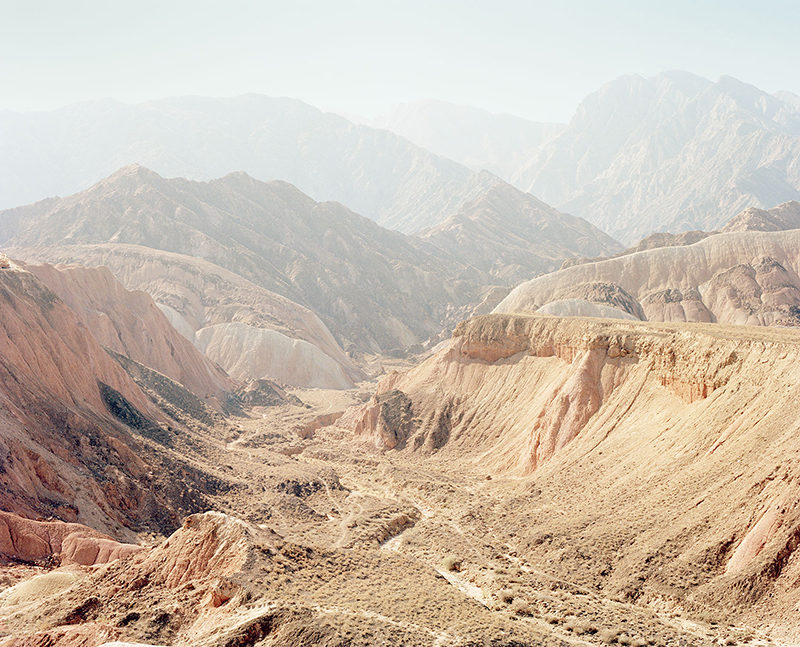


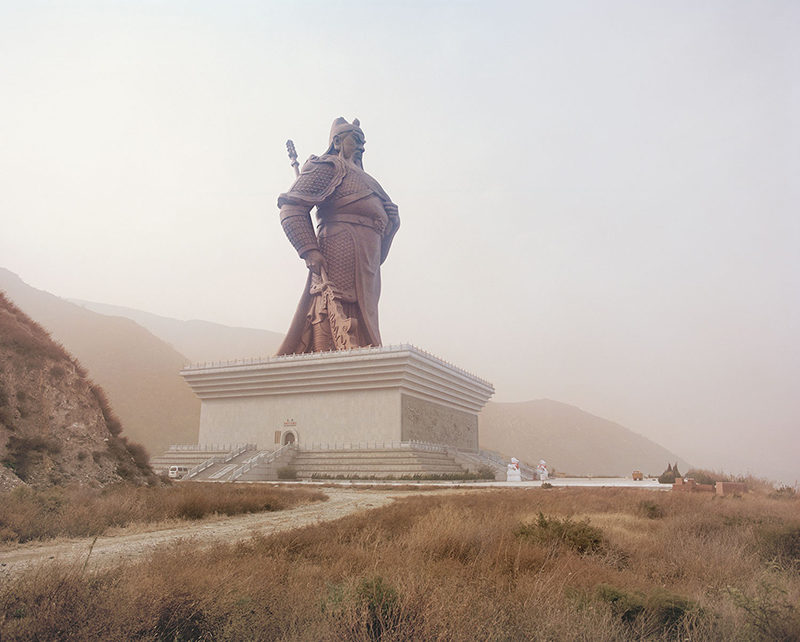
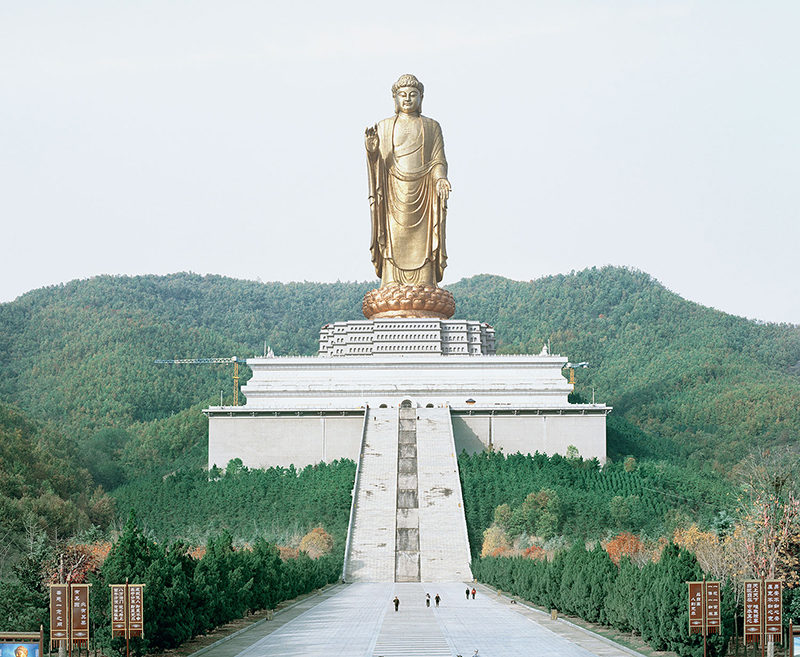

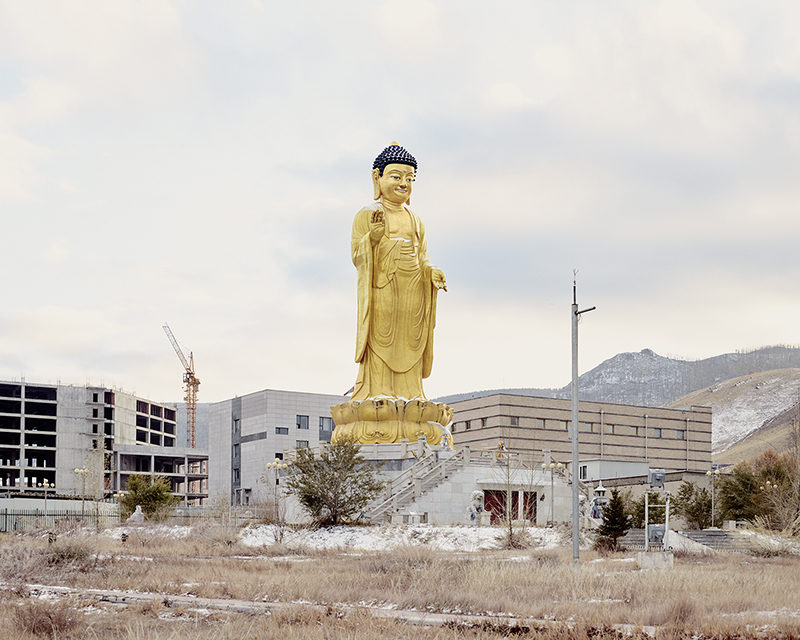
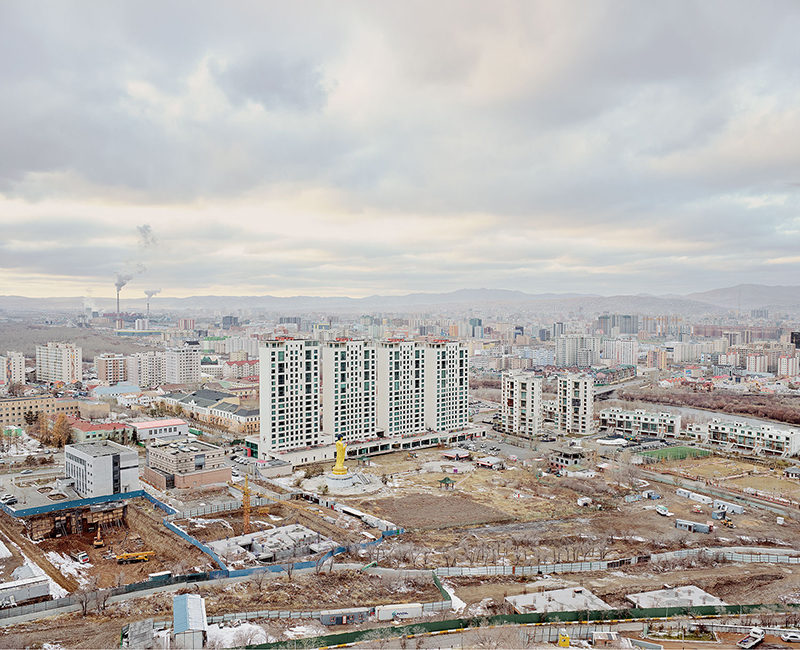
To view more of Catherine’s work please visit her website.